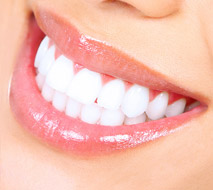TEETH WHITENING - BLEACHING

If you want to add perfection to your smile, you can start with bright white teeth. The whitening process is the procedure that removes discoloration problems occurring in the structure of the teeth. Bright white teeth, which are the primary criterion of healthy teeth and gums, are achieved by two important techniques: bleaching and whitening.
The bleaching method is divided into two main groups. In the first, the patient applies it at home by themselves. In the second method, the patient's teeth are whitened by the dentist in a clinical (office-type) environment.
• Office-Type Teeth Whitening (Office Bleaching)
• At-Home Teeth Whitening (Home Bleaching)
Office-Type Teeth Whitening 
The office-type teeth whitening method is a tooth whitening technique that achieves results much faster compared to at-home whitening. In office bleaching, measures should first be taken to protect the gums and other soft tissues inside the mouth that could be damaged. The gums should be covered with a protective layer to prevent the whitening agent from reaching them.
The difference from at-home whitening is the active ingredient used and its larger amount. However, this substance should be applied under the supervision of a dentist. Additionally, if light sources such as laser or LED are used together with office-type whitening, deep whitening of the teeth can be achieved.
At-Home Teeth Whitening
This method is very easy and safe to apply, and treatment durations usually last about 1 to 4 weeks depending on the condition of the teeth. Before starting whitening, a full oral and dental health check must be completed by the dentist. Problems like tartar prevent whitening.
After all necessary oral and dental health checks are done, impressions are taken from the patient's mouth. Transparent trays are prepared. The dentist gives the whitening gel to be used in the treatment along with the trays. The dentist informs the patient about the application and usage. The whitening gel is kept on the teeth for approximately 5-7 hours. It is more comfortable to apply this during sleep. Depending on the effect of the gel, the application times may vary. The treatment is usually completed in about 1 week.
Advantages of At-Home Teeth Whitening:
• It is cheaper.
• It is easy to use.
Disadvantages of At-Home Teeth Whitening:
• Treatment duration is longer.
• Consumption of beverages such as tea, coffee, and cola that cause color changes in the teeth must be avoided.
• You should avoid smoking and other staining substances during the application.
• Be careful when placing the trays on your teeth; otherwise, your gums may be damaged.
• Although easy to use, due to time consumption and ineffectiveness on some deep stains, it is less preferred nowadays.
Frequently Asked Questions About Teeth Whitening
Is Teeth Whitening Safe?
Teeth whitening systems performed under dentist supervision have no harm to the individual in any way. All studies and research confirm this. The fluoride application used by your dentist makes the whitening process an even safer technique.
What Are the Side Effects of Teeth Whitening?
Most whitening gels cause a certain amount of sensitivity. This sensitivity, even to cold and hot drinks or air, unfortunately causes discomfort. Your dentist can apply topical fluoride to reduce this sensitivity.
How Long Does Maximum Whitening Take?
Results vary from person to person. Some teeth whiten in 24 minutes, while others may require one or two sessions. It should be noted that graying caused by antibiotic use is a bit more difficult to whiten.
How Long Does Whitening Last?
Remember, after whitening, your teeth will never return to their original color. Some discoloration occurs between 6 months and two years. This discoloration varies depending on dietary habits.
Why Is Teeth Whitening Not Recommended for Pregnant or New Mothers?
There is no research on this. Manufacturers state that this procedure should not be applied to pregnant or breastfeeding mothers.
Does Whitening Gel Whiten Crowns and Porcelain Veneers?
It should be noted that porcelain crowns and bridges do not whiten. To match the whitened teeth, these might need to be replaced. Your dentist will provide necessary information.
How Long Should Coffee and Red Wine Be Avoided After Whitening?
It is very important to avoid tea, coffee, smoking, cola, red wine, sour cherry juice, and colored foods for about 2 days after whitening. The effect of whitening continues in dentin tubules for 48 hours.
If consumption is unavoidable, brush your teeth immediately after or rinse with water.
Does Whitening Cause Pain?
There may be sensitivity depending on the condition and thickness of your enamel. The pain or discomfort experienced is tolerable. Anesthesia is not applied.
Are There Teeth That Do Not Whiten?
Unfortunately, the appearance of root canal treated teeth cannot be improved with vital bleaching. A different internal whitening process must be applied. The whitening agent is placed inside the tooth and covered with a temporary filling. The tooth is left like this for several days. This process can be repeated as many times as desired until the tooth reaches the desired color.







